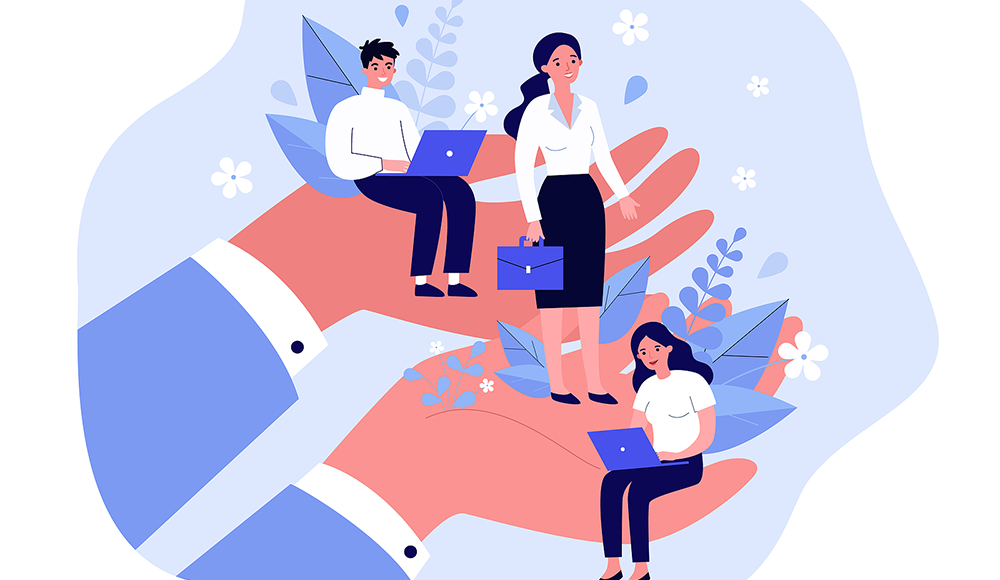How Do You Deliver a Consistent Benefit Experience When Your Employees Are Scattered Around the Globe?

The international working landscape, in which skills and expertise are shared across borders, has increased the need for globally consistent employee experiences. This is especially true now, in the work-from-home era, which has added another layer of complexity to recruiting and engaging talent.
Benefits are often more important than job title, colleagues, or organizational culture in eliciting loyalty from employees. As a result, many business leaders are reevaluating the role of the physical workplace and how benefits are impacted by the new ways of working. It is more important than ever that each of a company’s workers feel they have the same employee experience as their colleagues, regardless of where they are based and where they work. Employers need to be cognizant of their employees’ shifting needs, and they must adapt their benefits offerings to make sure they stay relevant to all employees throughout this period of great change.
Delivering Consistency Through Technology
Our latest research here at Darwin found that just over half (53 percent) of employees believe they get the same benefits experience regardless of where they are based. The rest find themselves dealing with regional anomalies including mixed messaging, inconsistent branding, and a lack of personalization.
This is cause for concern, especially in a largely remote work climate that is expected to continue for the foreseeable future for many employees. In a global workforce, employee needs will naturally differ markedly depending on each worker’s location and personal circumstances. Even so, every employee’s experience must be consistent.
The majority (81 percent) of employers told Darwin that achieving a globally consistent employee experience is a “high priority” for the next 12 months. Technology is key in achieving this consistency. Not only can technology help employees easily access their benefits when and as needed, but a tech-enabled benefits program can deliver the same consistent look and feel across the organization. Benefit and HR teams can also utilize a centralized back end, which allows them to accurately analyze benefit data like spend, uptake, and engagement across the globe. This data can help benefit and HR teams adapt their approaches as necessary in order to cut unnecessary spend and predict future costs.
Check out the latest issue of Recruiter.com Magazine for more career advice and recruiting trends:
Personalize Benefits to Satisfy Employees’ Individual Needs
Not all employees will have had the same experiences during the pandemic. Some, for example, were challenged by the task of caring for children while adjusting to remote work. Others may have struggled with making their homes into comfortable and effective work environments.
Personalization allows an organization to offer employees benefits that can be molded to their particular needs. For example, a flexible well-being benefits pot gives employees the power to choose how to best to spend their allowances. Working parents could spend the money on things that help with childcare, while others might prefer at-home workout equipment, additional hardware for the home office, or additional resources to help care for older relatives.
Our research at Darwin found that 73 percent of businesses spend more than 16 percent of their wage bills on employee benefits every year. Forty-two percent spend more than 21 percent on benefits. With so many dollars allocated to benefits spend, employers can’t afford to devote resources to benefits that aren’t fit for purpose. Why invest in travel loans when uptake — for both personal and business travel — is low or nonexistent?
—
Over the coming weeks and months, employees’ needs are likely to keep shifting — and that will affect what they want from their benefits packages. By embracing an intelligent approach to benefits that relies on the right tech and emphasizes flexibility, organizations can better personalize their benefits offerings and focus on options that will make a real difference to their employees.
Employees want consistency regardless of their work environments, and organizations are already making the changes needed to deliver on this. Nearly half (44 percent) of the employers who responded to our survey said they are planning to fully centralize their HR operations within the next 12 months, and 11 percent plan to do so within three years. Better still, the percentage of organizations that currently purchase benefits technology (39 percent) and/or administer (38 percent) their employee benefits on a global scale has increased since 2019. This is an encouraging sign, and more organizations should follow suit in order to deliver globally consistent experiences for employers and employees alike.
Chris Bruce is cofounder and managing director ofDarwin.

